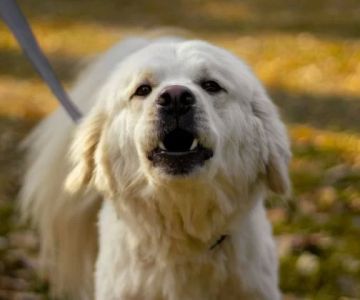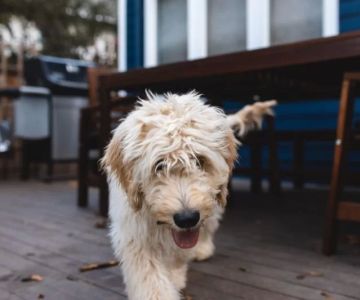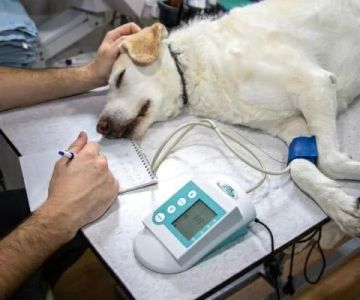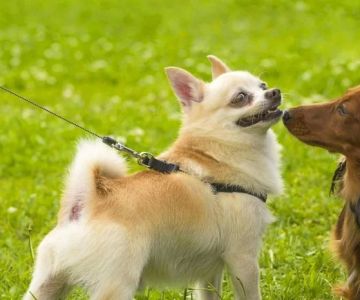Understanding the Problem: Why Dogs Are Sensitive to Loud Noises
Loud noises, such as thunderstorms, fireworks, or construction sounds, can cause significant anxiety in many dogs. Some breeds are naturally more sensitive to sound, but even the most resilient dogs can develop noise phobia. It's important to recognize the signs of anxiety in your dog, which may include shaking, barking, hiding, or attempting to escape. Understanding the root of your dog's fear is crucial before beginning any form of training.
Signs of Anxiety in Dogs
Behavioral changes such as panting, drooling, destruction of household items, and sudden changes in posture (like cowering or tail tucking) are often indications that your dog is feeling anxious due to loud noises. By recognizing these symptoms early, you can begin to address your dog’s fear before it becomes a more significant issue.
Steps to Calm Your Dog During Noisy Situations
Training a dog to handle loud noises takes time and patience. The key is gradual desensitization and positive reinforcement. Here are some effective strategies:
1. Desensitization
Desensitization involves exposing your dog to loud noises at a low level and gradually increasing the volume as your dog becomes more comfortable. Start by playing recordings of the loud noises at a very low volume while offering treats or engaging in playtime. Over time, increase the volume slowly and continue rewarding calm behavior. This method teaches your dog that loud sounds don’t need to be feared.
2. Counterconditioning
Counterconditioning works by changing your dog’s emotional response to the noise. Pair the loud noise with something positive, like a favorite toy or treat. For example, if your dog starts to get anxious during a storm, offer them a high-value treat or engage them in an enjoyable activity, such as playing with their favorite ball. This helps shift their focus from the fear to the reward.
3. Create a Safe Space
During particularly loud moments, it’s helpful to create a safe space for your dog. This could be a quiet room with their bed, blanket, and favorite toys. Consider using calming aids like pheromone diffusers or calming music to make the space feel more secure. If your dog has a favorite hiding spot, like under the bed or behind the couch, allow them to retreat there when they feel overwhelmed.
4. Use Calming Products
There are a variety of calming products available for dogs, such as anxiety vests, calming collars, and natural supplements. These products can be helpful in conjunction with training methods, especially in high-stress situations like thunderstorms. Be sure to consult your veterinarian before using any calming products to ensure they are appropriate for your dog’s specific needs.
5. Maintain a Routine
Dogs thrive on routine, and a consistent schedule can help reduce anxiety. Try to keep feeding, play, and exercise times regular. When a dog knows what to expect throughout the day, they are less likely to become anxious during unfamiliar or stressful events.
Real-Life Case: Successfully Training Dogs for Fireworks Season
Take the case of Max, a rescue dog who was terrified of fireworks. Every Fourth of July, Max would spend the evening trembling under the bed, unable to relax. His owners decided to try desensitization training. They started with small fireworks sounds played through a speaker at low volumes. Over several weeks, they gradually increased the volume while rewarding Max for calm behavior. By the time the next July 4th came around, Max was able to enjoy the holiday without excessive fear. This example demonstrates that with consistent training, even severe noise anxiety can improve.
When to Seek Professional Help
If your dog’s anxiety continues despite your best efforts, or if they show extreme signs of distress (such as destructive behavior or self-harm), it’s important to consult a veterinarian or professional dog trainer. In some cases, a dog may require more specialized behavioral therapy or medication to help manage their anxiety. Working with a professional can help you develop a tailored plan to address your dog’s specific needs and ensure their safety and well-being.
When to Call in a Trainer or Vet
While many dogs can be trained to handle loud noises calmly, some may require professional guidance. A certified dog trainer with experience in fear-based behaviors can provide additional support, helping you develop a more effective training program. Your veterinarian may also suggest behavioral modification techniques or medications if your dog’s anxiety is severe.
Conclusion: Helping Your Dog Feel Safe and Secure
Training dogs to handle loud noises calmly requires time, patience, and consistency. By incorporating desensitization, counterconditioning, and creating a safe environment, you can help your dog feel more at ease in stressful situations. Remember, each dog is unique, and their response to training may vary. With the right approach, your dog can learn to manage their fear of loud noises, making both of your lives more peaceful and enjoyable.












